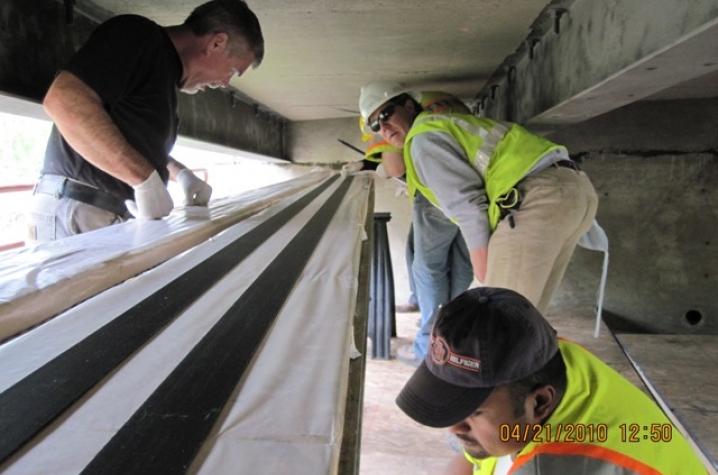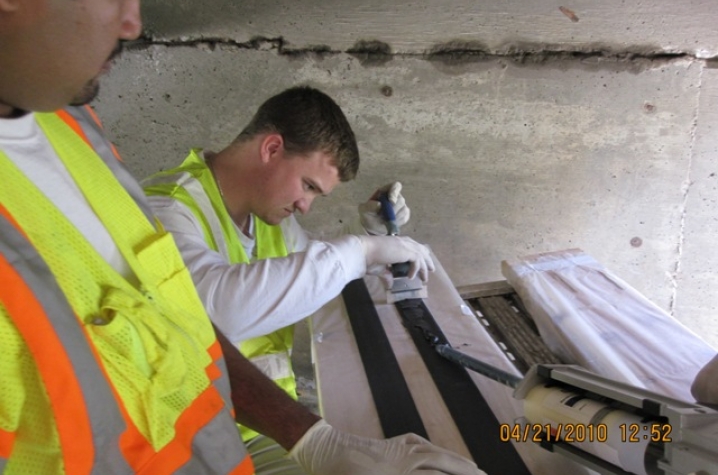Unique Project Strengthens Scott County Bridge
LEXINGTON, Ky. (April 22, 2010) − Imagine increasing the maximum weight-bearing capacity of a bridge by nearly three times its current load capacity by connecting the concrete deck to the steel beams and adding several lightweight strips of a cutting-edge material to the existing steel beams. Well, imagine no more because that day has arrived at the University of Kentucky's College of Engineering.
Issam Harik, Raymond-Blythe Professor of Civil Engineering and program manager at the Ketucky Transportation Center at UK, is leading a team of researchers working on an Innovative Bridge Research and Deployment (IBRD) project in Scott County, funded by the Federal Highway Administration (FHWA) in cooperation with the Kentucky Transportation Cabinet (KyTC).
"The material we are working with is ultra high modulus carbon fiber laminate," said Harik. "This carbon laminate can be applied to existing steel girder bridges to reinforce them and increase their strength. And, the material is so lightweight that far less manpower and equipment is needed to perform the installation."
On Wednesday, Harik and his team attached the carbon laminate panels to a small bridge on KY 32 in Scott County, north of Georgetown. The KY 32 bridge is the first bridge in the U.S., and the second in the world, to be strengthened with ultra high modulus carbon fiber laminate.
"We always utilize smaller bridges in the experimental stages of such a project," said Harik. "Then, we can monitor and evaluate the success of the project before moving up to bigger structures."
The KY 32 bridge being used in this project currently has a weight-bearing capacity of 14 tons, or 28,000 pounds. Once the installation is completed, that capacity is expected to increase to well over 80,000 pounds, allowing larger vehicles to be able to safely use the crossing.
"The primary object of the FHWA, KyTC, and UK in this project is to optimize the use of taxpayers' funds in enhancing our transportation infrastructure. The lessons learned from this project will be used in Kentucky, the U.S., and the world for upgrading and extending the life of similar bridges," said Harik.






